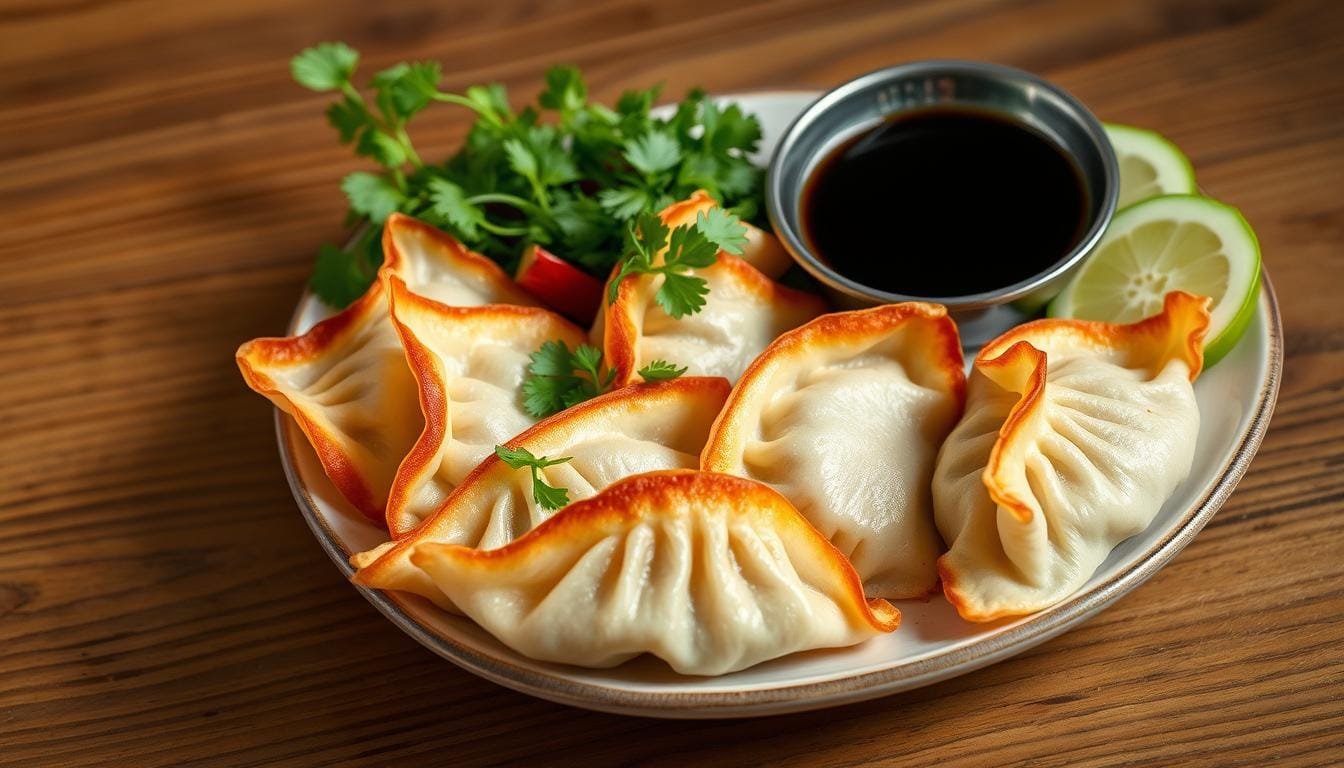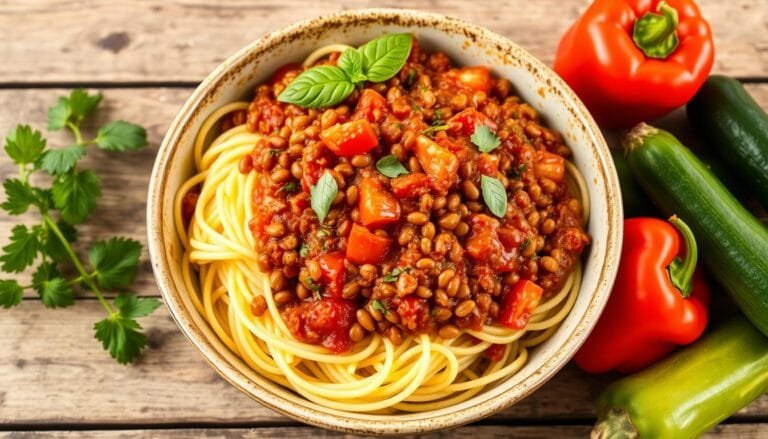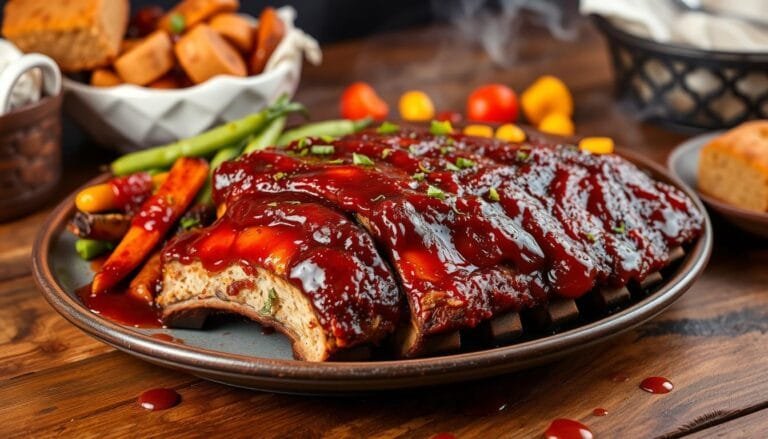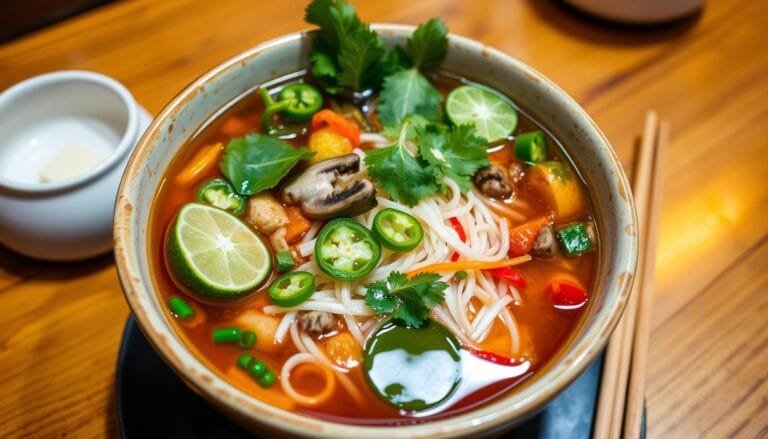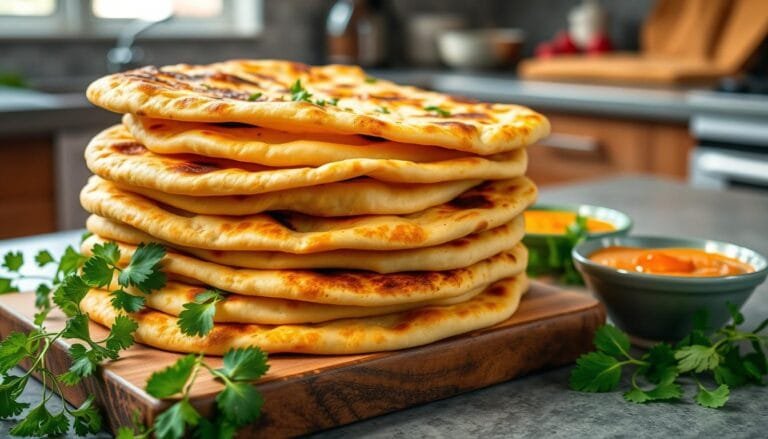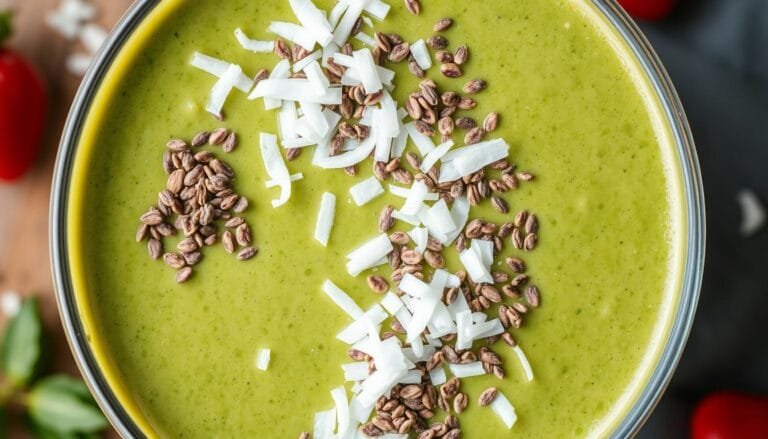I love exploring Japanese cuisine, and vegan gyoza is a favorite. These dumplings are filled with fresh veggies and pan-fried to perfection. They’re a tasty appetizer and a healthy meal option.
This recipe is great because it’s easy to make. You can make the gyoza wrappers gluten-free. Plus, you can change up the veggie filling to suit your taste. This makes the dumplings perfect for many diets.
These vegan gyoza are perfect for any meal. They’re quick to make, ready in just 60 minutes. And with only 316 calories per serving, they’re a guilt-free treat.
What Are Japanese Gyoza: Understanding the Traditional Dumpling
Gyoza is a savory dumpling loved by many around the world. It comes from China’s jiaozi but is now a key part of Japanese food. These dumplings are filled with ground meat, cabbage, and spices. They are wrapped in thin dough and pan-fried until golden.
Origins and Cultural Significance
Gyoza’s history in Japan started after World War II. Japanese soldiers brought back the idea of Chinese dumplings. Over time, Japanese chefs made their own version, adding to the country’s food culture. Today, gyoza is a favorite in Japan, along with sushi and ramen.
Traditional vs Vegan Gyoza
Traditional gyoza has ground pork, but vegan options are becoming popular. These dumplings use vegetables like mushrooms and tofu instead of meat. They keep the same taste and cooking style as traditional gyoza but are healthier for those who don’t eat meat.
| Characteristic | Traditional Gyoza | Vegan Gyoza |
|---|---|---|
| Filling | Ground pork, cabbage, and aromatic seasonings | Mushrooms, cabbage, tofu, and plant-based seasonings |
| Cooking Method | Pan-fried and steamed | Pan-fried and steamed |
| Nutritional Profile | Higher in protein, but also higher in fat and calories | Lower in protein, but also lower in fat and calories |
| Dietary Restrictions | Not suitable for vegetarians or vegans | Suitable for vegetarians and vegans |
Gyoza, whether traditional or vegan, holds a special place in Japan. It shows the country’s creativity and ability to adapt in food.
Essential Ingredients for Vegan Gyoza Dumplings
Making tasty vegan gyoza dumplings needs the right plant-based ingredients. The dumpling wrappers are key, whether you make them or buy them. The fillings can be many things, but some favorites include:
- Firm tofu or mushrooms for a meaty texture
- Finely chopped vegetables like nira (garlic chives), cabbage, and carrots
- Aromatic garlic and ginger, sautéed in sesame oil
- A binding agent like potato starch or cornstarch
- Soy sauce, rice vinegar, and other seasonings for depth of flavor
Vegan gyoza fillings can be changed to fit your taste. Try different veggies, like green onions or napa cabbage, instead of nira. And for gluten-free wrappers, use rice flour or other gluten-free options.
With the right mix of vegan gyoza ingredients and creativity, you can make delicious, plant-based dumplings. They’ll surely please your taste buds.

“The key to delicious vegan gyoza is finding the perfect balance of flavors and textures in the filling.”
Making Perfect Homemade Dumpling Wrappers
Making your own gyoza wrappers is a fun and rewarding task. You can choose between all-purpose flour or a gluten-free option. Learning to make dumpling wrappers can make your vegan gyoza even better.
Gluten-Free Wrapper Options
If you want a gluten-free option, use white rice flour and tapioca starch instead of all-purpose flour. Mix the dough with boiling water to make it soft and stretchy. Adding a bit of xanthan gum can help the dough hold its shape better.
Tips for Rolling and Shaping
- Divide the dough into small, equal portions, making it easier to roll out into thin, even rounds.
- Lightly dust your work surface and rolling pin with flour to prevent the dough from sticking.
- Roll the dough out as thinly as possible, aiming for a thickness of around 1/8 inch.
- Use a glass or a round cookie cutter to cut the dough into perfect circles, the ideal size for your gyoza.
- Gently transfer the cut wrappers to a lightly floured surface, avoiding overlapping to prevent them from sticking together.
With a bit of practice, you’ll make perfect homemade gyoza wrappers. They’ll be ready to be filled with your favorite gluten-free dough and dumpling shaping techniques.
Flavorful Vegetable Filling Combinations
Creating the perfect vegan gyoza fillings is a fun journey. We can make tasty fillings without meat, using fresh, plant-based ingredients. From shredded cabbage to mushrooms, the choices are endless.
A mix of chopped cabbage, carrots, and mushrooms is a favorite. The carrots’ sweetness and mushrooms’ umami are a great match. Adding garlic, ginger, and green onions gives a fragrant twist.
For extra protein, tofu, lentils, or chickpeas are great. These ingredients blend well with the veggies, making the filling satisfying.
Want a spicy kick? Add crushed red pepper flakes or Sriracha. The secret to perfect fillings is trying different veggies and spices until you find your favorite.
| Vegetable Combination | Protein Addition | Seasoning |
|---|---|---|
| Cabbage, Carrots, Mushrooms | Tofu, Lentils, Chickpeas | Garlic, Ginger, Green Onions, Soy Sauce, Rice Vinegar |
| Napa Cabbage, Zucchini, Red Pepper | Tempeh, Edamame, Black Beans | Miso, Sesame Oil, Chili Crisp, Scallions |
| Spinach, Shiitake Mushrooms, Onion | Crumbled Seitan, Sautéed Portobello | Tamari, Sesame Seeds, Chili Powder, Cilantro |
The fun of vegan gyoza fillings is trying new flavors. Mix different veggies, proteins, and spices to make your own unique gyoza.
Step-by-Step Guide to Folding Gyoza
Learning to fold gyoza is key to making beautiful dumplings at home. The traditional hand fan pattern might seem hard, but there are simpler ways to get the perfect shape. We’ll look at different pleating methods and common mistakes to avoid for your vegan gyoza.
Different Pleating Techniques
The Half Moon shape is an easy method. Just put a teaspoon of filling on the wrapper, fold it in half, and press the edges to seal. For a more detailed look, try the 2-Pleat method, where you fold the wrapper in half and add two small pleats on each side.
For a more adventurous look, try the One-Directional Pleat method. Make evenly spaced pleats along the edge of the wrapper. This gives a delicate, ruffled look. The Bi-Directional Pleat method is perfect for an elegant presentation, with pleats folding towards the middle from both sides.
“Ensuring a tight seal on the dumplings is key to prevent them from coming apart during cooking.”
Common Folding Mistakes to Avoid
- Don’t overfill the wrappers, as this can cause them to burst open while cooking.
- Too much water when sealing can make the wrapper tear or become soggy.
- Keep the wrappers covered to prevent them from drying out, making them hard to fold.
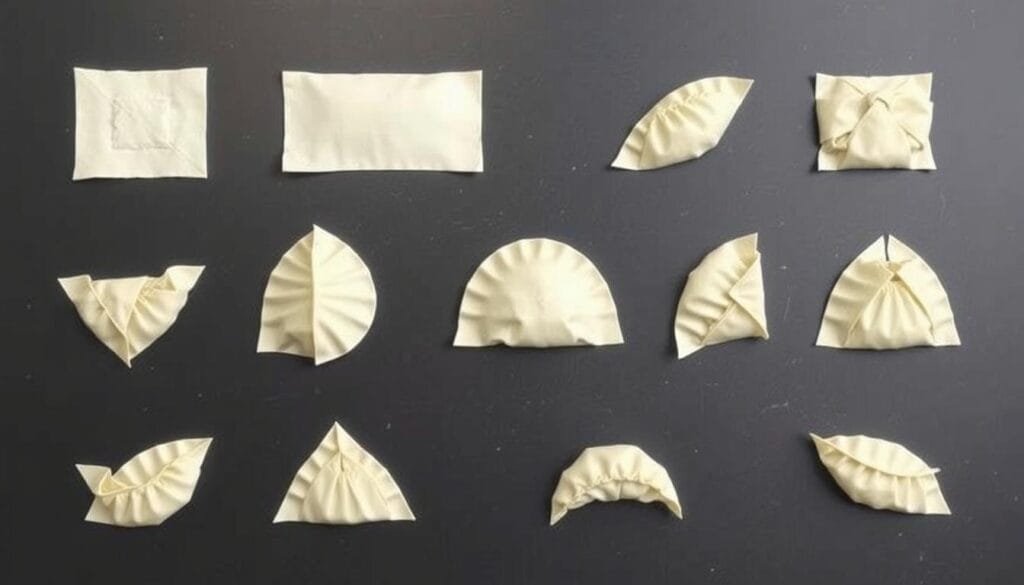
With a bit of practice and these tips, you’ll soon be folding gyoza like a pro. Enjoy making delicious vegan gyoza to share with loved ones.
Cooking Methods: Steaming and Pan-Frying
Learning to make tasty vegan gyoza, or Japanese dumplings, is all about cooking skills. These tasty pockets can be made in different ways, each giving a special texture and flavor. Let’s look at the two main methods: steaming and pan-frying.
Steaming Vegan Gyoza
Steaming is a traditional method for cooking gyoza. It keeps their soft texture and flavors. To steam your vegan dumplings, boil water in a steamer or pot with a basket. Put the gyoza in the steamer, making sure they don’t touch, and steam for 3-4 minutes until they’re fully cooked.
Pan-Frying Vegan Gyoza
Pan-frying gives gyoza a crispy outside and a soft inside. Heat a tablespoon of oil in a non-stick pan over medium-high heat. Place the gyoza in the pan, leaving some space between them. Cook for 2-3 minutes until the bottoms are golden.
Then, add a splash of water to the pan, cover, and steam the dumplings for another 2-3 minutes. When the water is gone, drizzle a teaspoon of sesame oil over the gyoza. Cook for a minute or two more to get the perfect crunch.
Whether you steam or pan-fry your vegan gyoza, the trick is to keep the cooking temperature right. Watch the dumplings closely to make sure they’re cooked just right. With a bit of practice, you’ll get the hang of gyoza cooking techniques. You’ll be able to make delicious steamed dumplings or pan-fried potstickers that will wow your guests.
“The secret to perfectly cooked vegan gyoza lies in the balance of steaming and pan-frying. It’s a delicate dance that rewards patience and attention to detail.”
Creating the Perfect Dipping Sauce
No homemade gyoza is complete without the perfect dipping sauce. The traditional Japanese gyoza sauce is a mix of soy sauce and rice vinegar. But, there are many other tasty variations to try.
Whether you want a classic taste or something new, the goal is to mix saltiness, acidity, and heat. This way, the sauce will enhance the flavors of your vegan gyoza.
Traditional and Modern Sauce Variations
The classic gyoza dipping sauce is made from soy sauce and rice vinegar. This simple mix lets the gyoza’s natural flavors stand out. For a bit of heat, add chili oil or red pepper flakes.
Or, try adding sesame oil or agave syrup for a nutty or sweet touch.
Balancing Flavors and Spice Levels
Play with the sauce’s ingredients to get the flavor just right. Start with 2 tablespoons of soy sauce and 1 teaspoon of rice vinegar. Then, adjust to your liking.
If you like it spicier, add more chili oil or red pepper flakes. For sweetness, add a teaspoon of agave syrup or honey.
Homemade gyoza dipping sauce is all about personal taste. Offer different sauces, like a classic soy-vinegar mix and a spicy-sweet one. This lets everyone enjoy their meal just the way they like it.
| Ingredient | Amount |
|---|---|
| Soy sauce | 2 tablespoons |
| Rice vinegar | 1 teaspoon |
| Chili oil | 1 teaspoon (optional) |
| Agave syrup | 1 teaspoon (optional) |
| Sesame oil | 1 teaspoon (optional) |
| Red pepper flakes | 1/4 teaspoon (optional) |
Creating the perfect gyoza dipping sauce is all about trying new things and finding the right mix. With a few simple ingredients and some creativity, you can make your vegan gyoza even better.
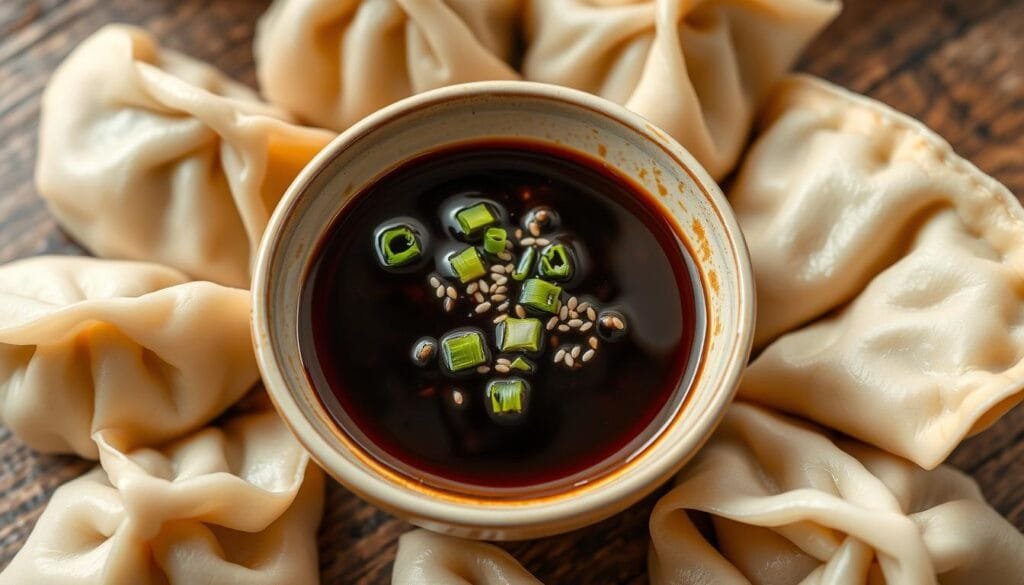
Storage and Freezing Tips for Homemade Gyoza
Keeping your homemade freezing dumplings fresh and flavorful is key. Here’s how to store and gyoza storage your vegan gyoza dumplings:
- Freeze Uncooked Dumplings: Put the uncooked dumplings in a single layer on a baking sheet. Use parchment paper or aluminum foil. Freeze them for 1-2 hours until solid. Then, put them in an airtight freezer bag or container. They last up to 1 month in the freezer.
- Cook Frozen Dumplings Directly: No need to thaw frozen dumplings. Just add them to your cooking method (steaming, pan-frying, or air frying). Cook for 1-2 minutes longer than fresh ones.
- Refrigerate Cooked Dumplings: Cooked preserving homemade gyoza stays good in the fridge for 2 days. But freezing is better to keep the wrappers from getting soggy.
Follow these tips to enjoy your homemade vegan gyoza dumplings anytime. You won’t lose any taste or texture.
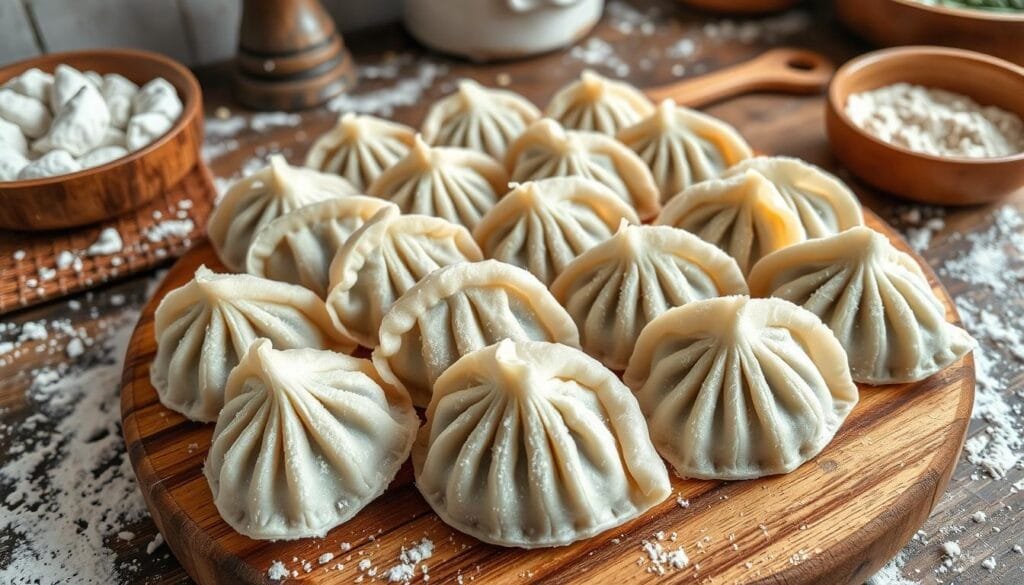
“Freezing is the best method for storing uncooked dumplings. Frozen dumplings should be consumed within 2 to 3 months to prevent freezer burn.”
Serving Suggestions and Presentation Ideas
Serving vegan dumplings, or gyoza, can be a delightful and visually appealing experience. When it comes to gyoza presentation, the key is to showcase the delicate texture of the dumplings. Arrange the hot, freshly cooked gyoza on a platter or plate, nestled on a bed of crisp lettuce or fresh herbs for a vibrant contrast. Garnish the Japanese appetizer plating with a sprinkle of toasted sesame seeds and thinly sliced spring onions for a touch of crunch and color.
Consider serving the gyoza as an appetizer, a side dish, or even as a main course. For an authentic touch, present the dumplings in traditional bamboo steamers. This allows your guests to experience the full aroma and theater of the dish. The gyoza presentation can be further enhanced by a selection of dipping sauces. This lets your guests customize their flavor experience.
| Serving Suggestion | Presentation Idea |
|---|---|
| Appetizer | Arrange gyoza on a platter, garnished with sesame seeds and spring onions |
| Side Dish | Serve in a bamboo steamer with dipping sauce on the side |
| Main Course | Pair with steamed rice or noodles for a satisfying meal |
By paying attention to the gyoza presentation and serving vegan dumplings in an appealing manner, you can transform a simple dish into a visually captivating and delicious experience for your guests. Embrace the art of Japanese appetizer plating and let your homemade gyoza shine.
Troubleshooting Common Issues When Making Vegan Dumplings
As a home cook, I’ve faced the challenge of making vegan gyoza dumplings. Issues like torn wrappers and leaking fillings can be frustrating. But, I’m here to guide you through these problems. This way, your next batch of gyoza will be a success.
Wrappers tearing is a common problem. It often happens when the dumplings are overfilled or not sealed well. To avoid this, fill them just right and seal the edges carefully. Use a little water on the edges to help them stick.
Another issue is fillings leaking during cooking. If your filling is too wet, drain off excess moisture before wrapping. Also, chop or grate your filling ingredients finely. This ensures they mix well and don’t leak.
Sticking to the pan is another common problem. To prevent this, use enough oil and let the dumplings sear well before moving them. With patience and the right technique, your vegan gyoza will cook perfectly without sticking.
